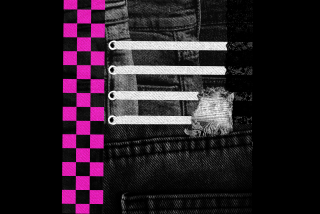A Lesson Born of Intolerance
PALM SPRINGS — An island of glitz in an otherwise bleak desert, this town has always been a flawed paradise, tainted by a quiet history of racial tension. So when students painted epithets and a swastika on the walls of Palm Springs High School, civic leaders greeted the news with heavy hearts and dejected resignation.
But more than a year later, some of those same leaders, including the school’s African American principal, say they now view the incident with a sense of irony. The graffiti, although it was an overt reminder of lingering racism, has in some ways led to a renewed sense of tolerance and harmony.
“We are a stronger school and a better school because of it,” said Principal Ricky Wright. “It caused us to pull together.”
When it comes to tolerance, the Palm Springs area has always been confounding.
The region is a top destination for gays and lesbians--so much so that it is home to a gay retirement community. The area revels in its image as a precocious playground--an image reinforced recently when the community shrugged after a resort decided to expand via a nudists-only bridge over a busy downtown street.
But some have been less accepting of certain ethnic and racial groups.
In the 1940s, African American and Latino families began flocking to the Palm Springs area, many to work on the nearby farms and military installations. A number of them moved to a small parcel of land called Section 14.
Work was sporadic, and even when it was available, wages were meager. The area had many impoverished families. City officials, busy selling Palm Springs as a ritzy resort, didn’t think Section 14 fit in with that campaign.
Scores of homes were condemned. Many were burned. State officials found that some families had been cast out without notice. To African Americans in the area, the sweep cemented a separate-and-unequal existence.
Despite its increasing diversity, many saw the Palm Springs area as divided among the haves--mostly white--and the have-nots.
At Palm Springs High School, there were many racially motivated arguments and fights throughout the 1980s and ‘90s, and federal education investigators later found the largely white faculty guilty of “negative stereotyping” of minority students.
In the summer of 2000, 18 students--including Asians and Latinos, but no African Americans--scrawled a racial epithet on Wright’s office window and hung a dead black cat from a nearby clock tower.
Wright suspended the students for five days and barred them from graduation-week festivities, including commencement exercises. That angered their parents, who felt the punishment was too severe. Wright declined to press charges, and the Riverside County district attorney’s office said it did not have enough evidence to arrest the students, which angered local minority leaders.
“I think that some of the students did not realize the impact it would have,” said Ronald Oden, director of a private vocational college in Palm Springs, a three-term Palm Springs city councilman and former chairman of the Palm Springs Human Rights Commission.
“They initially thought it was a prank. But they didn’t realize how the community would be affected by the behavior.... What they thought was going to be a joke turned out to be a disaster.”
Today, Wright and Oden say the incident forced the school to address simmering tensions.
Among other changes, aging textbooks were traded in for newer ones with more multicultural themes. The Palm Springs Unified School District hired more minority teachers. It educated the faculty in tolerance and diversity. Some of those efforts were underway before the incident, but school officials say the episode pushed them to the top of the agenda.
And, although no one knows for sure whether the changes are linked, the school is beginning to document some encouraging trends. The percentage of seniors who graduate rose from 91.5% in 1999-2000 to 95.9% in 2000-01, school records show. Suspensions fell by 7.5% over the same period.
Confrontations still occur at Palm Springs High, as they do at any school. But Wright says they are now one-on-one, kids-will-be-kids exchanges, not disputes between entire racial or ethnic groups. “You’re always going to have issues that come up,” Wright said. “But now you don’t have large groups that are consistently going after each other. It’s a different place.”
Whether the changes seen at the school will expand into the broader community remains to be seen.
Some members of Palm Springs’ old guard protested when civic activists began holding tolerance and diversity seminars at the high school.
“The school district got some heat for doing this program,” said Martin Lax, a Palm Desert attorney and a volunteer who taught one of the classes. “It’s unfortunate, because we think the more educated you are, the better off you are. It’s a careful balancing act that the school district found themselves in.”
And the work is not over, said Marjan Keypour-Greenblatt, associate director of the Anti-Defamation League in Los Angeles. She distributed anti-bias materials at the high school after the graffiti incident and helped organize two seminars for parents: one that warned them of hate material on the Internet, and another that featured a viewing of the film “Journey to a Hate-Free Millennium.”
The graffiti incident “was used as a teachable moment for the district, to build something positive and help the community come together,” said Keypour-Greenblatt.
“But I think it needs to be stated that this is ongoing work.... We constantly need to address our personal prejudices and find positive and constructive ways to build alliances with those who are different and are marginalized by society.”
More to Read
Sign up for Essential California
The most important California stories and recommendations in your inbox every morning.
You may occasionally receive promotional content from the Los Angeles Times.











